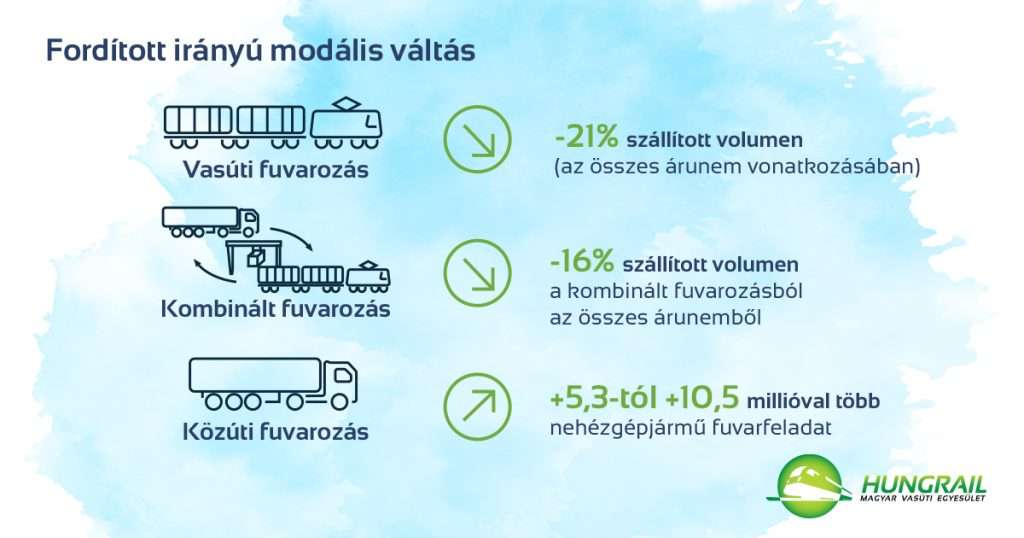THE APPEARANCE OF MEGA-TRUCKS ON DOMESTIC ROADS WOULD BE A DISASTER FOR THE RAILWAYS 06/02/24
< ZurückAuthor: Hungrail
THE APPEARANCE OF MEGA-TRUCKS ON DOMESTIC ROADS WOULD BE A DISASTER FOR THE RAILWAYS
The detailed rules have not yet been decided, the continent's railway operators must now make their voices heard in shaping the EU directive!
The HUNGRAIL Hungarian Railway Association is constantly working together with its member companies and international partner organizations to finally adopt a package of proposals on mega-trucks that does not reduce the competitiveness of rail freight transport and does not result in the exact opposite of what is, in principle, one of the main green goals of the European Union: to shift as much of the freight transport from road to environmentally friendly rail and water transport as possible.

Consequences of European licensing of giga trucks. Source: d-fine.
The danger is enormous, since the international rise of larger, longer and heavier trucks is intended to be sold as a change to reduce emissions, partly citing the increasing economies of scale of truck transport, and partly because there would also be zero-emission vehicles among the giga trucks, the permitted larger size and weight of batteries or it would serve to build the hydrogen cell drive.
However, the European Commission's proposal to amend the directive on the weight and dimensions of commercial vehicles (96/53, with its popular English abbreviation: Weight and dimension) would not have any positive results at all if it were implemented in its current form. According to a study by d-fine GmbH, a consulting firm in Frankfurt, the consequence would be the reverse modal shift, namely in a big way: the authorization of giga trucks at the EU level would result in a reduction of up to 21% in rail freight transport in general, and 16% in combined transport . Such traffic would be diverted to the public road! This resulted in up to 10.5 million truck trips and 6.6 million tons of extra carbon dioxide emissions annually, the negative external effects can be estimated at 2.2 billion euros (almost 840 billion forints), but the maintenance of the road infrastructure specifically costs more than 1, It would mean additional costs of 15 billion euros (about 437 billion forints).
The five European railway advocacy organizations that commissioned the study, i.e
- the CER – Community of European Railway and Infrastructure Companies,
- ERFA – European Rail Freight Association,
- the UIC – European Railway Association,
- the UIP - International Private Car Association,
- the UIRR - Union of European Combined Transport Companies,
jointly warns of the harmful effects of the planned amendment. HUNGRAIL - which is a member of the CER and has a cooperation agreement with the UIRR - is in agreement with the five for the sake of the environment and rail freight transport, and will take part in this matter in every possible forum during the exciting legislative work of the coming weeks.
The current package of proposals would also call into question the existence of the rail unit carriage segment. The rational use of the limited resources available in the green transition, such as the materials and goods required for the production of batteries, is not to try to spread alternative powertrains at a forced pace in an area - long-distance freight transport - where there is no need to invent hot water: in transport, the truly green solution is the railway.
Supporters of giga trucks forget that battery or hydrogen trucks also use the roads and streets of settlements, due to the significant spread of giga trucks - this is the undisclosed purpose of the proposals! - highways, other public roads, and especially the special infrastructure serving giga trucks, from loading docks to roadside rest areas, will have to be expanded at a forced pace. Not to mention the problems caused by trains with up to two trailers at roundabouts, urban intersections, and railroad crossings.





